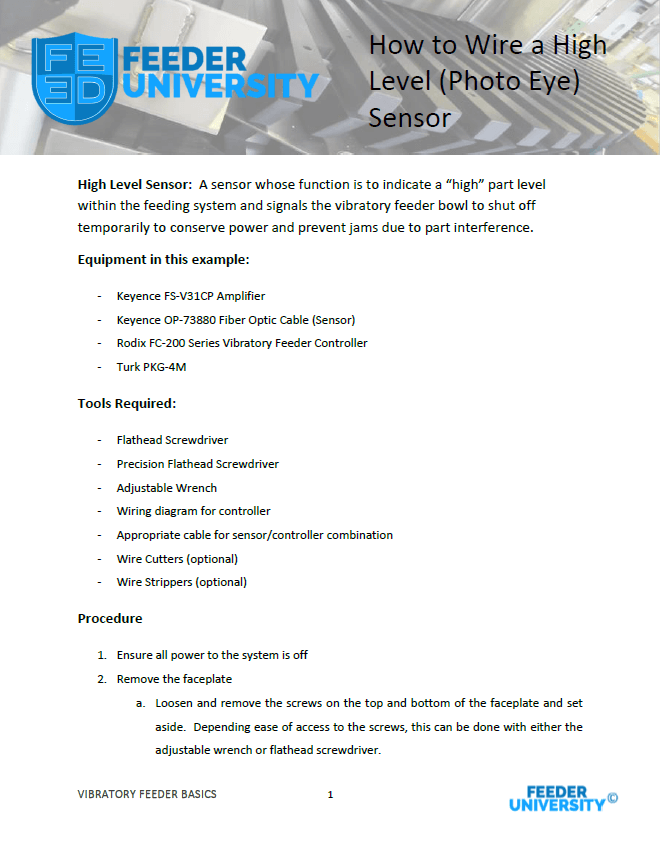Vibratory feeder systems are dynamic because of ebb and flow of part quantities in each step of the feeding and orientating process. Sensors help to regulate these flows so that the machine does not damage itself, neighboring machines, or the parts within them.
The High Level Sensor detects when a high level of parts has been prepared by the feeder (usually because the feeder operates at a higher rate than the next process requires), and the shuts the feeder bowl off temporarily to conserve power and prevent damage. These sensors save money and a lot of headache by make the feeding system “smarter”.
Feeder Systems vary greatly in complexity some requiring no sensors at all, and other requiring 5, 10, or more! Below are just a few different roles sensors can play in a vibratory feeding system:
 Whitepaper: How to Wire a High Level (Photo Eye) Sensor
Whitepaper: How to Wire a High Level (Photo Eye) SensorAlways wondered how to wire a high level (photo eye) sensor? Look no further! Here is a detailed whitepaper with step by step instructions, provided to you by Hoosier Feeder Company.
Robust and economical feeding systems to supply assembly lines of all kinds